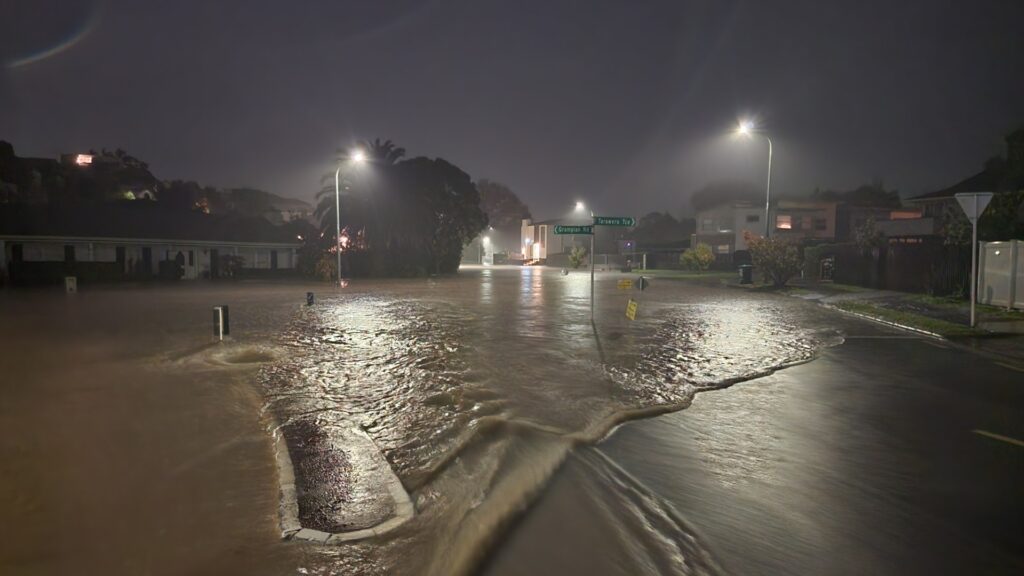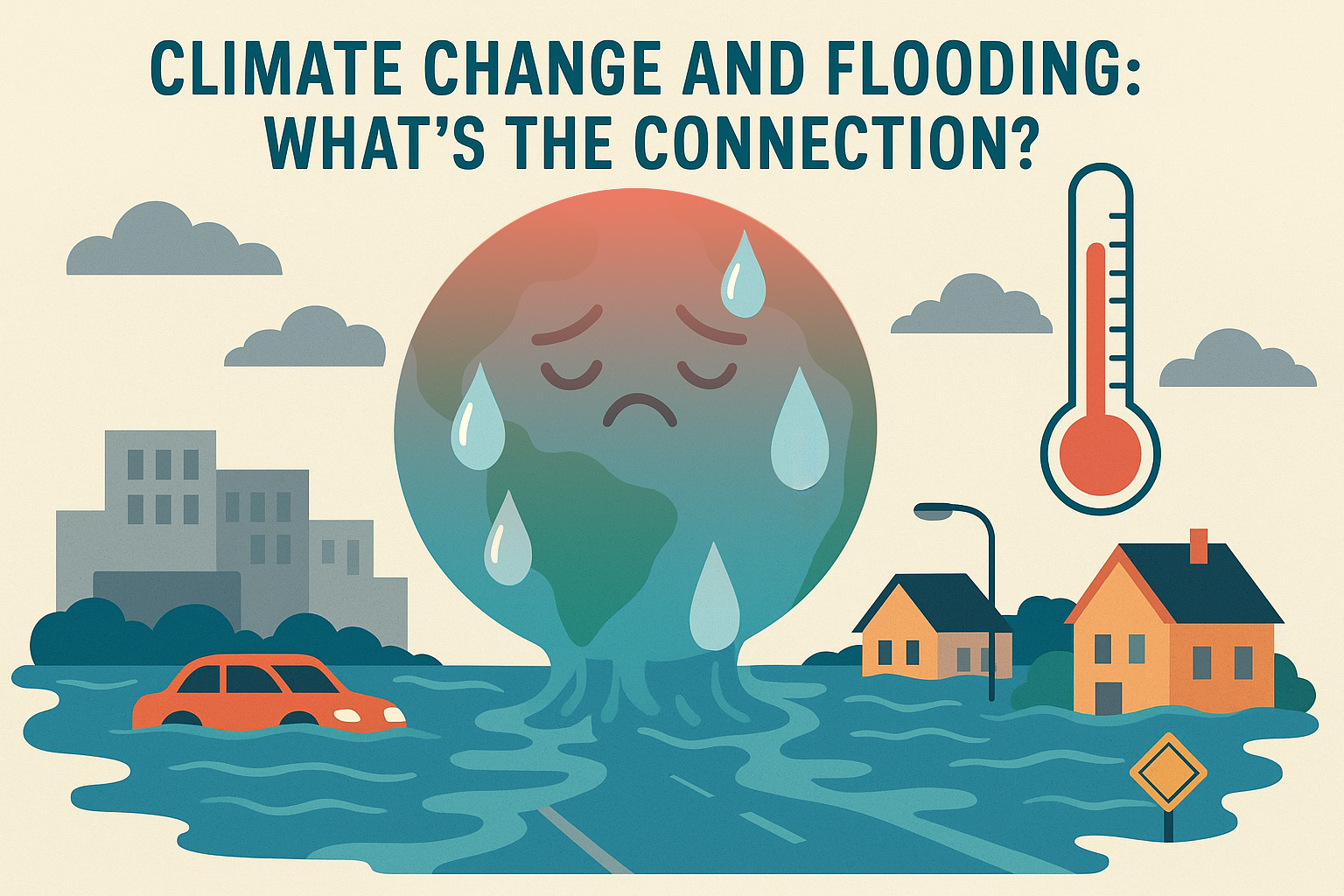In recent years, Auckland streets have turned into rivers during major storms. Homes have been damaged, and daily life has been disrupted by flooding. While flooding has always happened in New Zealand, something different is happening now. Climate change is making floods worse and more common across the country, with Auckland seeing some of the biggest changes. But how exactly are these two things connected?
How Climate Change Leads to More Flooding
Our planet is getting warmer because of climate change. When the air gets warmer, it can hold more water—about 7% more water for each 1°C rise in temperature. This is a scientific rule called the Clausius-Clapeyron relation. Think of it like a sponge that can soak up more water when it’s warm.
This leads to three main problems for Auckland:
- Bigger Rainstorms: When it rains now, the rain often comes in huge downpours. During the January 2023 Auckland floods, some areas got a month’s worth of rain in just a few hours! Drains and pipes built years ago weren’t made to handle this much water at once. The amount of flooding also depends on other things like how much concrete covers the ground and local weather patterns.
- Rising Sea Levels: Auckland is surrounded by water on two sides. Sea levels around New Zealand have been rising by about 1.7 – 2mm each year. In some parts of Auckland, the land is also sinking while the ocean rises, which makes flooding worse. When high tides, storm surges, and heavy rain happen at the same time, water can push much further into the city than before.
- Changing Weather Patterns: Climate change is shifting how weather systems move. Scientists have found that tropical storms are moving closer to the poles. This means Auckland might get hit by more tropical weather systems that carry huge amounts of rain.
Why Auckland Floods So Easily
Auckland has some special features that make flooding problems worse:
The city sits on a narrow piece of land between two harbors, so water comes from all sides. Many neighborhoods were built in low areas that easily flood. The city’s clay soil doesn’t soak up water well, so rain quickly runs off into streams and roads.
Also, as Auckland has grown, natural surfaces like forests and fields have been replaced with concrete and asphalt. These hard surfaces don’t absorb water, so rain rushes into storm drains that can’t handle it all.

How Flooding Affects People’s Lives
The impacts of flooding go beyond just getting wet:
Damage to Roads and Pipes: Infrastructure built decades ago wasn’t designed for today’s bigger storms.
Home Problems: Flood damage makes houses expensive to repair, and insurance costs rise in areas that flood often.
Business Disruptions: Flooding makes it hard for people to get to work and disrupts delivery of goods and services.
Mental Health: The stress of repeatedly dealing with floods can cause anxiety and other mental health problems.
What Can We Do About It?
There are two main ways to address Auckland’s flooding problems:
Adaptation means changing how we build things to handle more floods. This includes:
- Upgrading drains and stormwater pipes to handle more water
- Creating more parks and green spaces that can soak up rainwater
- Restoring wetlands that act like natural sponges
- In some cases, moving away from the most dangerous flood zones
Mitigation means reducing greenhouse gas emissions to slow down climate change. New Zealand has plans to cut emissions, which could help prevent flooding from getting even worse in the future.
Moving Forward
Understanding how climate change affects flooding helps us make better choices for Auckland’s future. This isn’t just about dealing with each flood as it happens—it’s about recognizing that our relationship with water is changing.
For people living in Auckland, this means preparing homes for flood emergencies, thinking about flood risk when choosing where to live, and supporting community plans that consider future climate conditions. For government officials, it means building infrastructure that can handle tomorrow’s climate, not yesterday’s.
Climate change has already made Auckland’s flood risk higher, and more changes are coming. However, how bad future flooding gets is partly up to us. By understanding the connection between global climate change and local flooding, Auckland can become more resilient to this growing challenge.
Sources
Climate Science and Weather Changes
- Intergovernmental Panel on Climate Change (IPCC). (2021). Sixth Assessment Report.
- NASA Earth Observatory. “The Water Cycle & Climate Change.”
Rainfall and Flooding in New Zealand
- National Institute of Water and Atmospheric Research (NIWA). “Extreme Rainfall and Flooding in New Zealand.”
- Ministry for the Environment. “Climate Change Projections for New Zealand.”
Sea-Level Rise
- NZ SeaRise Programme research on local sea-level changes.
- Ministry for the Environment. (2017). “Coastal Hazards and Climate Change Guidance.”
Auckland’s Vulnerability
- Auckland Council. “Auckland’s Climate Plan” (Te Tāruke-ā-Tāwhiri).
- Auckland Council Flood Planning Maps & Guidelines.
Impacts and Solutions
- Ministry of Business, Innovation & Employment. Building Code Updates.
- Insurance Council of New Zealand statements on flood risk.
- New Zealand Climate Change Commission. “Ināia tonu nei: a low emissions future for Aotearoa.”




0 Comments